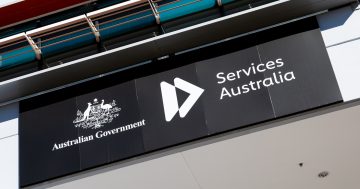
Reducing regulatory red tape will help many Australians. Photo: File.
Bureaucratic red tape is just begging to be cut and that’s what the Federal Government is aiming to do with its regulatory reform agenda.
Launching a dedicated effort to help boost productivity by cutting red tape, the government has unveiled a plan to reduce duplicative processes.
It is doing so by working with the states and territories to improve the quality of regulation and (hopefully) ease cost-of-living pressures for Australians.
A total of $27.9 million in funding over three years from 2024-25 was provided in MYEFO, with ongoing funding of $9.4m annually.
Finance Minister Katy Gallagher said reducing red tape had to be properly prioritised and funded for it to happen.
“The reducing red-tape agenda was left unfunded by the former Morrison government so this investment will ensure that the team is able to deliver reforms that make a difference for businesses and individuals,” Senator Gallagher said.
The reform agenda will focus on modernising regulation and improving regulator performance, including greater use of data and digital technology in delivering government services.
Priority projects include:
- Establishing a digital option to sign statutory declarations in myGov, estimated to save Australians $156m in time and costs each year
- Making it quicker and easier for overseas health practitioners to come to Australia to work
- Streamlining and standardising requirements for national worker screening in disability, aged, child and veterans’ care sectors while maintaining safety for care recipients
- Improving Australia’s food standards to enhance consumer food choices by reducing costs for both industry and government.
According to the government’s regulatory reform agenda’s website, it is looking at ways to boost productivity by reducing unnecessary or duplicative regulatory costs.
By cooperating with the states and territories, and working with international partners, opportunities are being identified for improving what is often a nightmare of doubled-up and confusing regulatory requirements.
“The government is also improving regulator performance, capability and culture through regulatory stewardship,” it states.
“This supports the government’s commitment to Australian Public Service reform by building trust in government and its institutions and by putting business and community at the centre of policy and services.”
One example is the Health Practitioners Regulatory Settings review.
In December, the National Cabinet endorsed the final report of the independent review, which recommends reforms to streamline regulatory settings to make it simpler, quicker and cheaper for international health practitioners to work in Australia.
The reforms aim to drive productivity dividends for migrants, employers and communities while maintaining healthcare quality and safety.
Another example is the APS regulatory reform, to improve how the government responds to market failures and how it promotes improved social, economic and environmental outcomes for Australians.
“Ongoing maintenance and review of these systems is integral to promote individual and community wellbeing, and well-functioning markets,” the website statement says.
“We work with regulators across the Commonwealth to adopt a stewardship approach to regulatory reform.
“Stewardship promotes a whole-of-lifecycle approach to regulation to meet current and future challenges. It recognises regulatory systems as assets that need regular review and maintenance to ensure the systems are fit for purpose, risk-based and contemporary to serve the Australian community.”
Other initiatives include reform of state and territory fundraising laws; improving national consistency of Working with Children checks; and simplifying payroll tax reporting.







